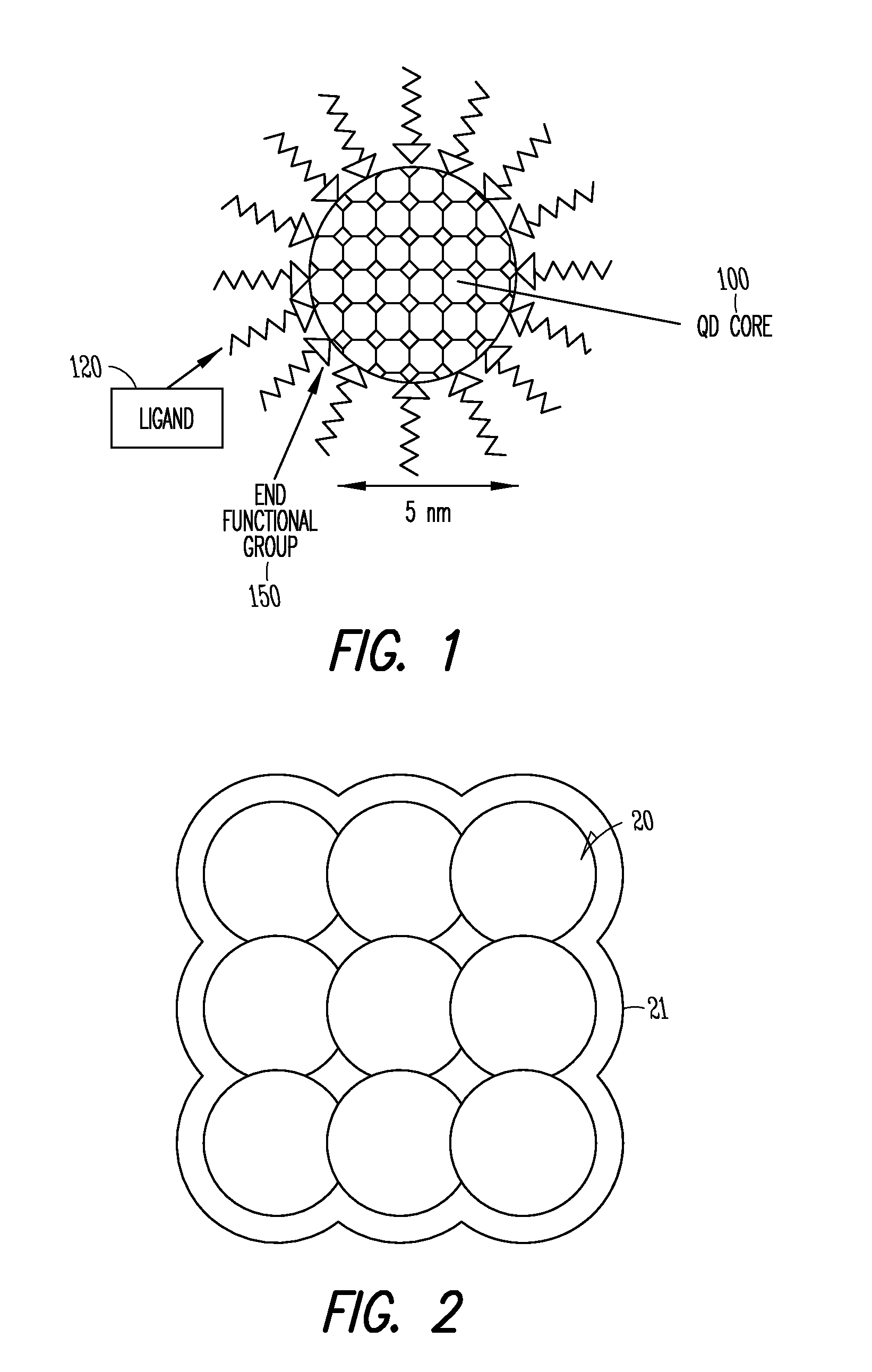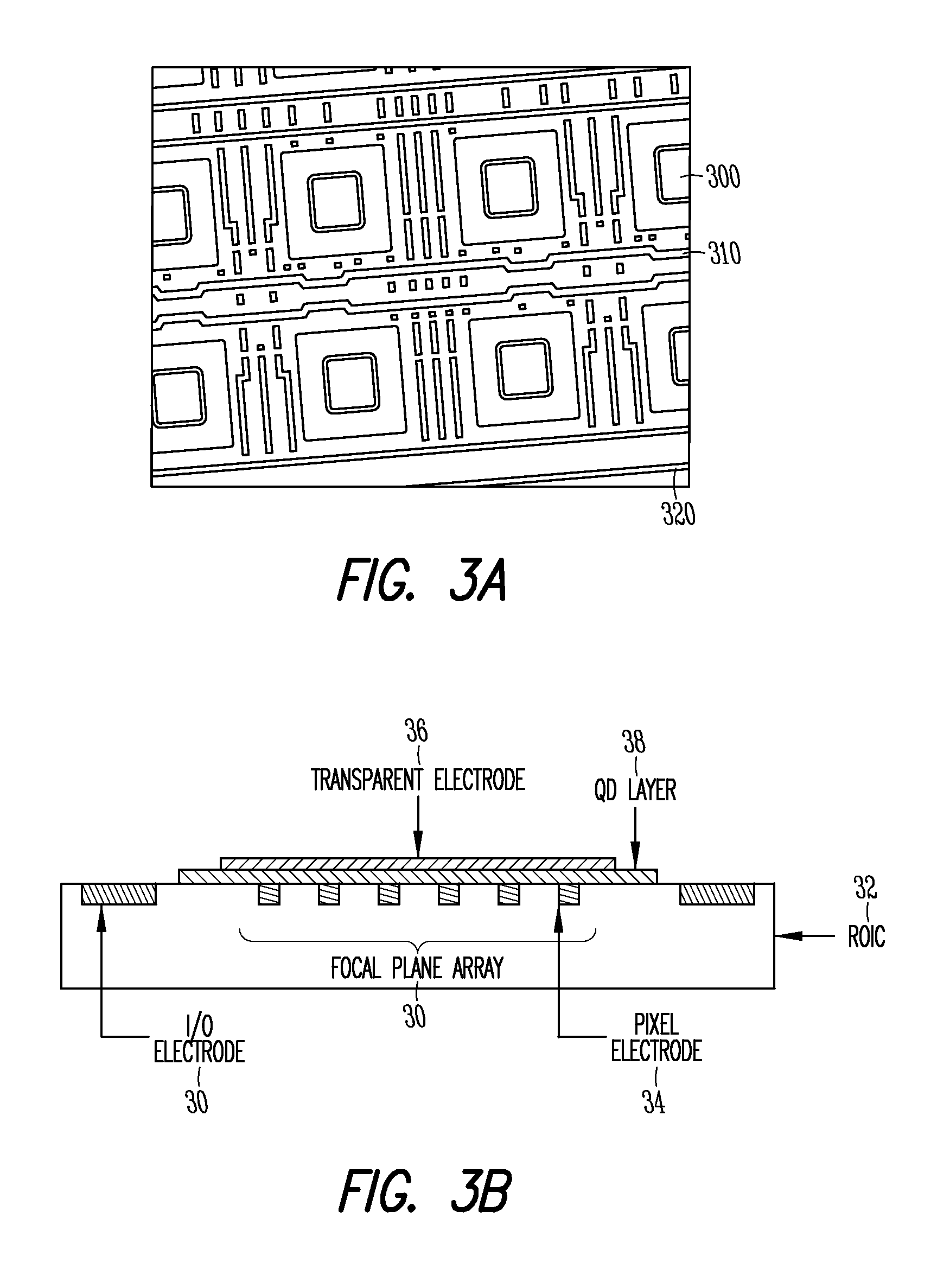Quantum dot optical devices with enhanced gain and sensitivity and methods of making same
a quantum dot optical and gain-sensitivity technology, applied in the field of optical and electronic devices, can solve the problems of low yield, unusually sensitive detectors, and general incompatibility of deposition with established silicon integrated circuit fabrication techniques
- Summary
- Abstract
- Description
- Claims
- Application Information
AI Technical Summary
Problems solved by technology
Method used
Image
Examples
examples
[0122]An exemplary photoconductive detector was made using a single layer of PbS QD nanocrystals spin-cast directly from a chloroform solution onto an interdigitated electrode array. The device structure is illustrated in FIG. 7A, and is analogous to the basic device of FIG. 4B. The parallel gold electrodes are supported by a glass substrate and have a height, width, and separation of 100 nm, 3 mm, 5 μm, respectively. The thickness of the QD layer was controlled through the concentration of the chloroform-QD solution and the spin-casting parameters. In studies carried out by the inventors the thickness ranged from 100 nm up to 500 nm.
[0123]The treatment of the surfaces of the QDs was an important determinant of photodetector performance. Devices made directly from QDs capped with oleic acid, as synthesized through an organometallic route, did not exhibit any measurable conductance, as the 2 nm-long oleate ligand inhibits carrier transport among QDs. A post-synthesis ligand exchange ...
PUM
| Property | Measurement | Unit |
|---|---|---|
| wavelengths | aaaaa | aaaaa |
| wavelengths | aaaaa | aaaaa |
| wavelengths | aaaaa | aaaaa |
Abstract
Description
Claims
Application Information
 Login to View More
Login to View More - R&D
- Intellectual Property
- Life Sciences
- Materials
- Tech Scout
- Unparalleled Data Quality
- Higher Quality Content
- 60% Fewer Hallucinations
Browse by: Latest US Patents, China's latest patents, Technical Efficacy Thesaurus, Application Domain, Technology Topic, Popular Technical Reports.
© 2025 PatSnap. All rights reserved.Legal|Privacy policy|Modern Slavery Act Transparency Statement|Sitemap|About US| Contact US: help@patsnap.com



